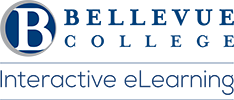by Brian Bergen-Aurand
With our continuing spate of inclement weather closing campus or otherwise interrupting our teaching schedules, I’ve turned toward putting some of my onground materials online. I’ve begun making a few resources and activities available to students with remote access because I’m trying not to fall behind.
Most of us already use a portion of CANVAS to supplement our onground classes. We put our syllabus online. Maybe we use our course sites to give students access to readings, videos, presentations, or links to outside materials. No matter how we are already using CANVAS to enhance our onground teaching, here are a few things to keep in mind when developing hybrid/blended materials on the go:
- Use What You Have/Reuse What’s Available. You don’t have to reinvent the wheel to put up a reading, video, podcast, discussion, or quiz you already have. Content creation is time-consuming. Under these conditions, keep it simple and follow this How to Make a Page Guide.
- Consider What Students Need. To avoid falling behind, we need to keep them engaged on a regular basis in small chunks. Try to think of activities they can do step by step or over a couple of days. If they’re not used to online courses, start slow and small.
- Provide an Orientation. This is crucial. If you have not done things online yet, make a video, write a step-by-step guide, email students screenshots, or find another way to show them how to access and complete the activities you’re moving online. Even posting a bullet point list in Announcements can help students new to online learning find their way.
- Encourage Online Interaction. Post a simple discussion. Ask students to create a list of links they find applicable to your course. Send out a survey (graded or ungraded) about some content to keep their wheels turning. The key here is to help them remember they are part of a group of learners invested in a community.
- Give and receive feedback. Again, stay in touch, especially if they are used to seeing you face to face, Monday through Friday. The website elearning Industry gives some good advice on giving and receiving student feedback.
- Remember some students may lose power/access under these conditions. One of my students told me her family often loses Internet access when the weather turns rough. I try to keep her in mind when I’m moving activities and materials online.
- Manage Your Time. Working in hybrid/blended situations means you will be online more. So will your students. Plan carefully so you don’t start doubling or tripling the workload.
Our wintry weather may continue over the next week or more, so adjusting materials and modes of interaction may become crucial to keeping classes on track. If you are new to these ideas, start small and try what you can. And, if you find yourself with even more snow days and nights than you’d imagined, I highly recommend Online & Blended Learning: Selections from the Field, a Routledge free book—available now from the Online Learning Consortium.
For more information on developing hybrid/blended materials, see:
- “Tips for Designing your Online/Hybrid Courses” from eLearning at Bellevue College.
- “Nine Tips for Creating a Hybrid Course” by Rob Kelly from Faculty Focus.
- “7 Tips to Create an Effective Blended eLearning Strategy” by Christopher Pappas from eLearning Industry.
- Empowering Online Learning: 100+ Activities for Reading, Reflecting, Displaying, and Doing by Curtis J. Bonk and Ke Zhang. (Jossey-Bass/Wiley, 2008).
Brian Bergen-Aurand is a Certified Instructional Designer in eLearning and Faculty in Arts & Humanities. He specialized in questions of Quality Standards (QOI, QM, SBCTC Standards), analytical design, and peer course review.
Last Updated October 24, 2020
